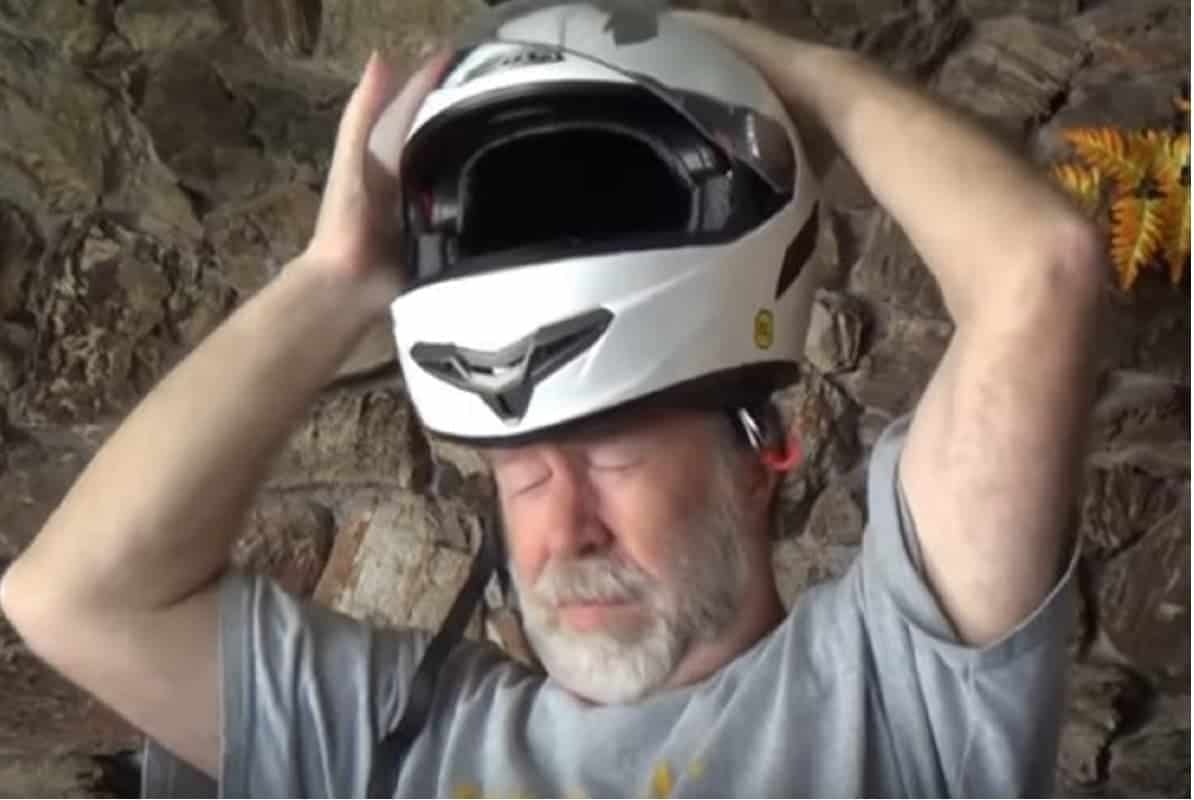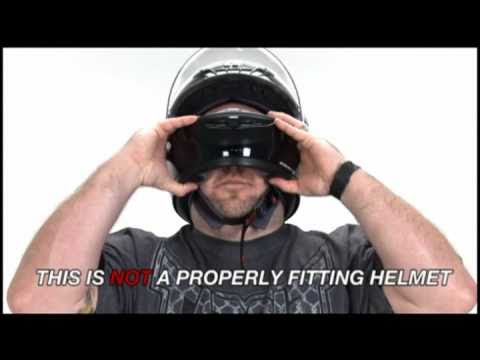A motorcycle helmet is one of the most important pieces of safety gear that a rider can wear. A good helmet will protect your head in the event of an accident and could potentially save your life. When choosing a motorcycle helmet, fit is paramount.
A helmet that is too loose or too tight will not provide adequate protection in the event of an accident. In this article, we’ll discuss how to choose a motorcycle helmet that fits properly.
If you’re a motorcycle rider, then you know how important it is to have a helmet that fits snugly. A tight fitting motorcycle helmet will help keep you safe in the event of an accident by staying securely on your head. It’s also more comfortable to wear, since there’s less wind noise and turbulence.
And if you’re riding in hot weather, a tight fitting helmet will help keep your head cooler.
So how do you make sure your motorcycle helmet fits tightly? First, check the sizing chart for the specific helmet you’re interested in.
Then measure your head circumference at the widest point and compare it to the chart. If you’re between sizes, always choose the smaller size for a tighter fit.
Once you’ve got the right sized helmet, it’s time to put it on and adjust the straps so it’s snug but not too tight.
The best way to do this is to have someone else help you so they can make sure everything is adjusted properly while you focus on keeping your head still. Once everything is tightened up, give yourself a little shake – your helmet should stay secure even if you move around a bit.
A snug fitting motorcycle helmet is essential for both safety and comfort while riding.
Make sure yours fits properly by following these tips!

Credit: www.headsdontbounce.com
How Should You Move an Injured Patient from the Ground to a Backboard?
There are a few different ways that you can move an injured patient from the ground to a backboard, but the most important thing is to make sure that you do not further injure them in the process. Here are a few tips on how to safely move an injured patient:
1. Make sure that you have enough people to help you.
It is always best to have at least two people helping to move an injured patient, as this will help to prevent further injury.
2. If possible, try to slide the patient onto the backboard rather than lifting them up. This will help to minimize any movement of their spine and neck, which could cause further injury.
3. Once the patient is on the backboard, be sure to secure them properly with straps or other means so that they cannot move around during transport. This will help to keep them stable and prevent further injury.
What is the Most Common And Serious Complication of a Significant Head Injury?
A significant head injury can lead to a number of different complications, but the most common and serious complication is a condition called traumatic brain injury (TBI). TBI occurs when the brain is damaged by a sudden force or impact, and it can range from mild to severe. Symptoms of TBI can include headaches, dizziness, nausea, vomiting, fatigue, difficulty concentrating or remembering things, mood swings and personality changes.
In severe cases, TBI can cause coma or even death. If you have suffered a significant head injury, it is important to seek medical attention immediately so that your condition can be assessed and treated appropriately.
When Immobilizing a Trauma Patients Find the Emt Manually Stabilizing the Head Should Not Let Go Until?
When treating a trauma patient, the EMT should manually stabilize the head and neck at all times. This is done to prevent further injury to the spine and keep the airway open. The EMT should not let go of the head or neck until the patient is safely in a stretcher or ambulance and on their way to the hospital.
When Immobilizing a Child on a Long Backboard You Should?
When immobilizing a child on a long backboard, you should ensure that the child’s head is in line with their spine. You should also secure the child’s arms and legs to the board using straps or tape. Finally, you should cover the child with a blanket to keep them warm.
Motorcycle Helmet Fitting Guide – How to make sure your helmet fits properly!
Motorcycle Helmet Tight on Cheeks
Are you experiencing motorcycle helmet cheek pain? You’re not alone. Many riders experience discomfort in their cheeks after wearing a motorcycle helmet for even a short period of time.
The good news is that there are ways to reduce or eliminate this pain.
There are three main reasons why your helmet may be causing cheek pain: the helmet is too tight, the straps are too tight, or the padding is too thick. Let’s take a closer look at each of these issues.
If your helmet is too tight, it will put pressure on your cheeks and cause pain. To fix this, simply loosen the straps until the pressure is relieved. If you need to wear your helmet tighter for safety reasons, consider switching to a smaller size or adding an extra layer of padding inside the helmet.
If your straps are too tight, they can also cause cheek pain by pulling on your skin. The solution here is to adjust the straps so they’re not so tight. Some helmets have adjustable straps that can be moved up or down; others have fixed straps that need to be replaced with longer or shorter ones.
Either way, make sure the straps aren’t so tight that they’re digging into your skin.
Finally, if the padding inside your helmet is too thick, it can push against your cheeks and cause pain. This can be especially problematic if you have full-cheek pads in your helmet (many racing helmets do).
In this case, you may need to replace the pads with thinner ones or remove them altogether. You could also try trimming them down yourself with a pair of scissors; just be careful not to cut too much off!
Hopefully one of these solutions will help relieve your motorcycle helmet cheek pain.
Conclusion
A motorcycle helmet is an important piece of safety gear that every rider should have. But, not all helmets are created equal. A tight fitting motorcycle helmet is essential for both comfort and safety.
When choosing a motorcycle helmet, it is important to find one that fits snugly. A loose fitting helmet can actually be more dangerous than no helmet at all. In the event of a crash, a loose fitting helmet can come off, leaving the rider’s head unprotected.
There are a few things to keep in mind when shopping for a tight fitting motorcycle helmet. First, measure your head before you shop. This will help you narrow down your choices to those that will fit properly.
Second, try on different helmets until you find one that feels comfortable and secure. And finally, make sure you buy from a reputable dealer who can help you find the right size and fit for your needs.
